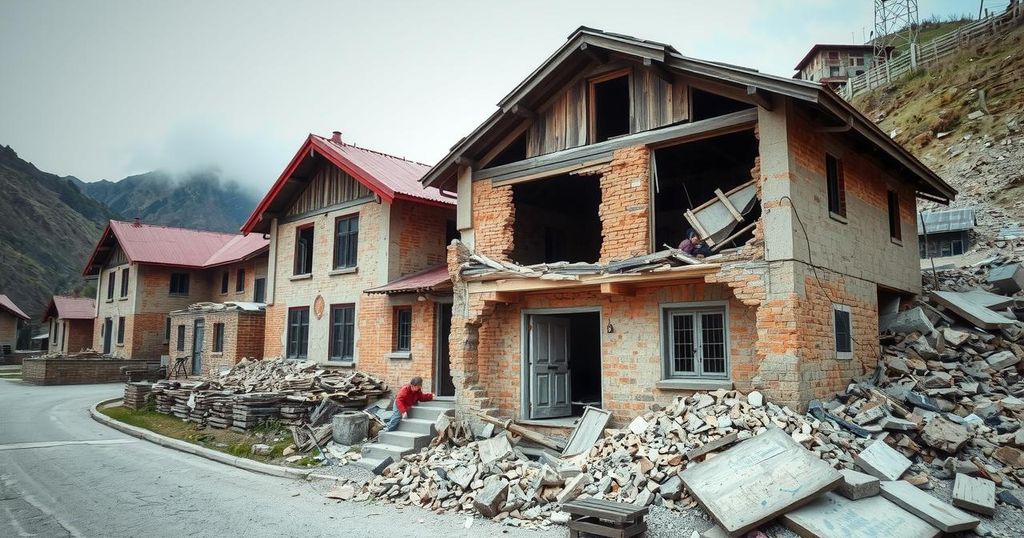Devastating Earthquake Strikes Dingri, Tibet, Leaving Death and Destruction

A magnitude 6.8 earthquake struck Dingri, Tibet on January 7, leading to the collapse of most buildings, at least 126 deaths, and.188 injuries reported. Rescue efforts are complicated by cold temperatures and aftershocks, with governmental responses mobilizing resources and personnel to assist survivors.
On January 7, at approximately 9 a.m. local time, a powerful earthquake measuring 6.8 on the Richter scale struck Dingri, a rural county in southern Tibet, an autonomous region of China. According to reports from the China National Earthquake Administration, the tremor resulted in significant structural damage, with estimates indicating that 80 to 90 percent of homes in the worst-affected areas collapsed. The tragedy claimed at least 126 lives and injured 188 others, as confirmed by the Xinhua News Agency later that evening.
Rescue efforts commenced immediately in the aftermath of the seismic event, with thousands of rescue workers and military personnel deployed to search for survivors amid the debris. The frigid temperatures, plummeting as low as -18ºC at night, have hampered these efforts, dampening hopes of finding anyone alive. The affected communities are situated at a high altitude of 4,200 meters, about 75 kilometers from Mount Everest, complicating rescue operations further. Numerous aftershocks were recorded in the hours following the initial quake, adding to the chaos and uncertainty in the region.
Visual reports from both state-run media and social platforms showcased the devastation, revealing shattered homes and trapped victims beneath the rubble. The response from the government has been swift, with President Xi Jinping calling for extensive search and rescue operations to be conducted and emphasizing the need to treat the injured. His directives also included the necessity of minimizing loss of life and ensuring that displaced individuals receive proper relocation assistance.
The region of Tibet, located within the southwestern territory of China, is known for its mountainous terrain and high altitude, which present unique challenges in the event of natural disasters such as earthquakes. The recent seismic activity in Dingri serves as a poignant reminder of both the geological instability of the region and the vulnerabilities faced by rural communities in such tumultuous conditions. Various infrastructure, particularly housing, may not be adequately designed to withstand the force of significant earthquakes, leading to high casualty numbers and extensive damage. In light of this disaster, governmental and humanitarian responses are paramount to alleviating the suffering expressed by those affected. The commitment demonstrated by the state in mobilizing resources and personnel emphasizes the importance of urgent action in disaster-stricken areas, particularly in the aftermath of such a devastating natural event.
In conclusion, the earthquake that struck Dingri, Tibet on January 7 has led to widespread devastation, claiming numerous lives and causing significant property damage. The challenges posed by the harsh weather and geographical conditions further complicate rescue and recovery efforts. The urgency of the situation necessitates immediate and effective response measures, as articulated by national leadership, to support those impacted and to mitigate the ongoing crisis in the affected communities.
Original Source: www.lemonde.fr






